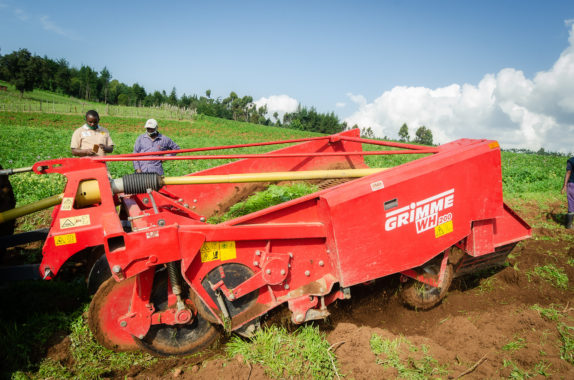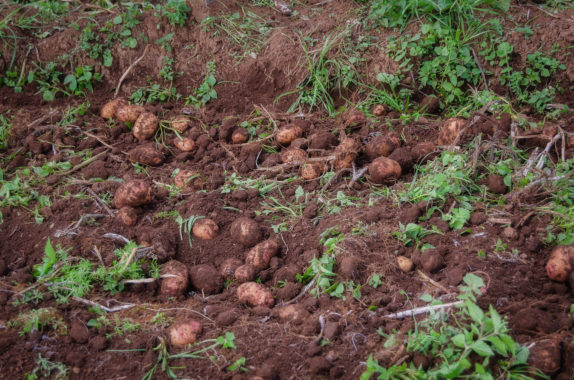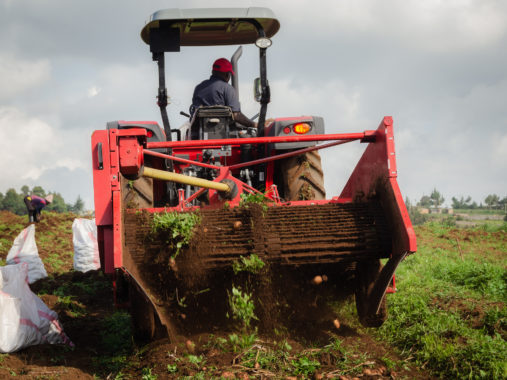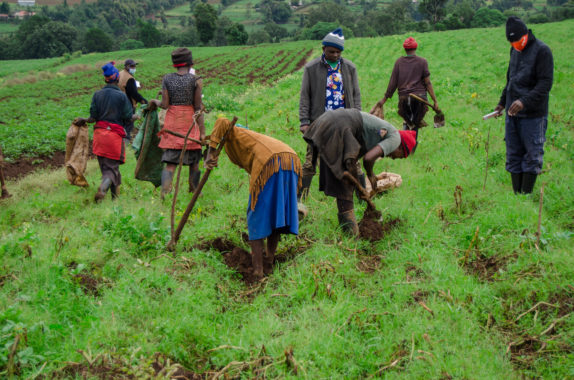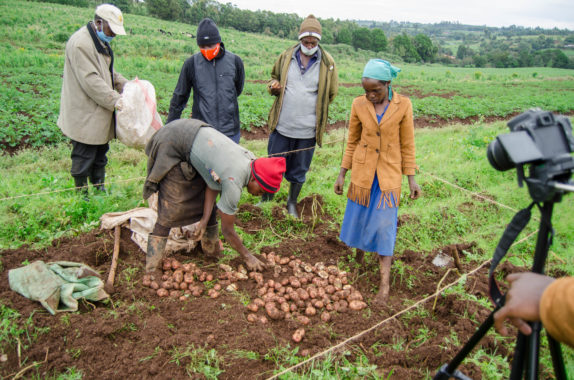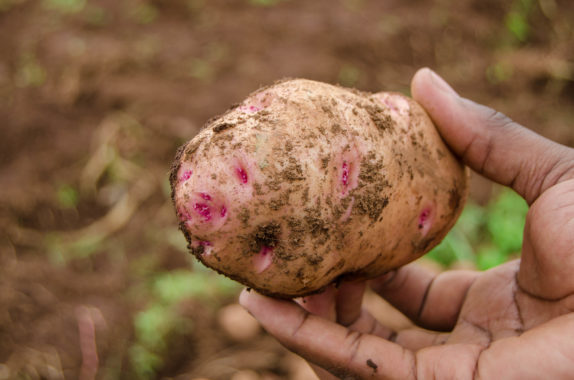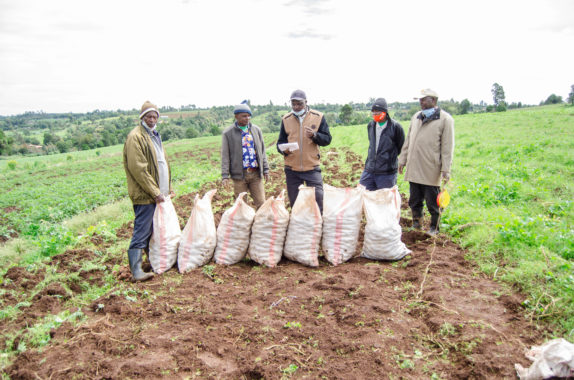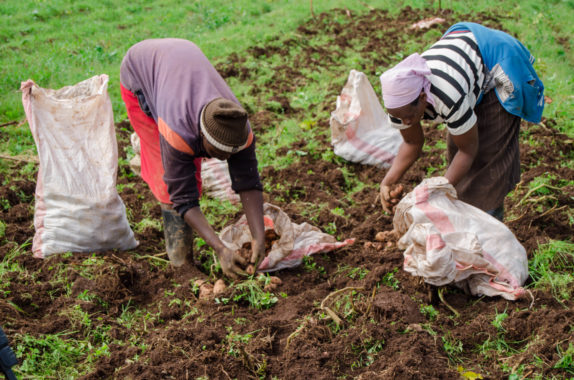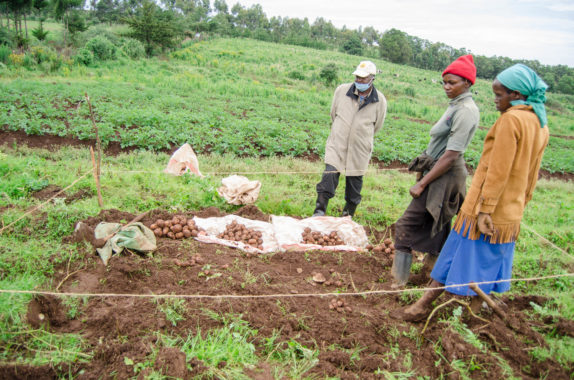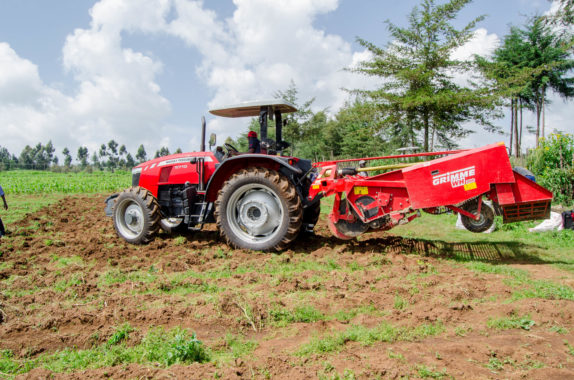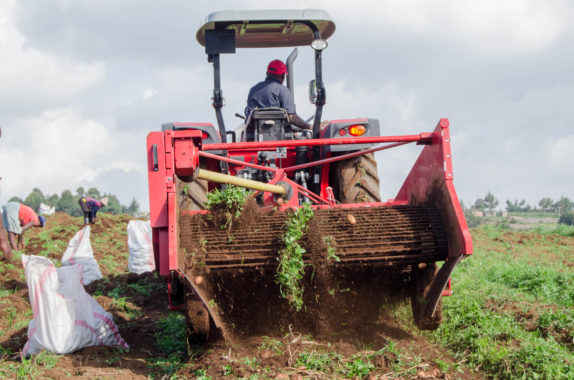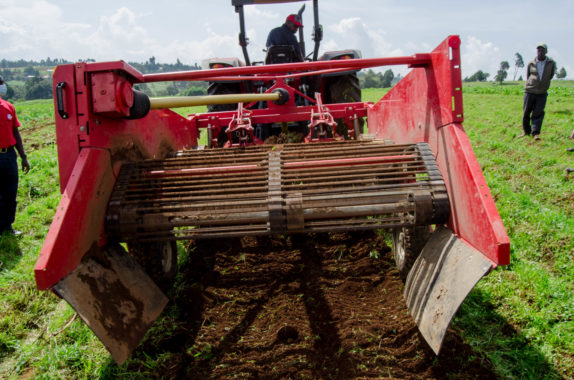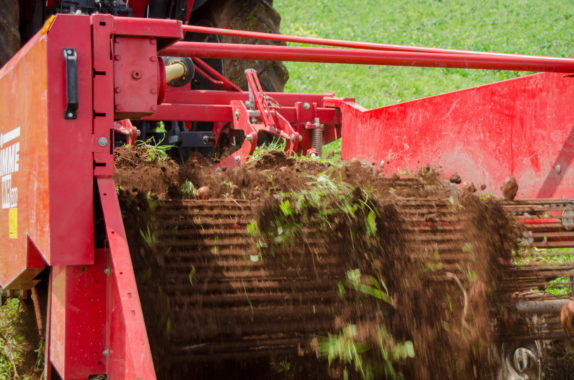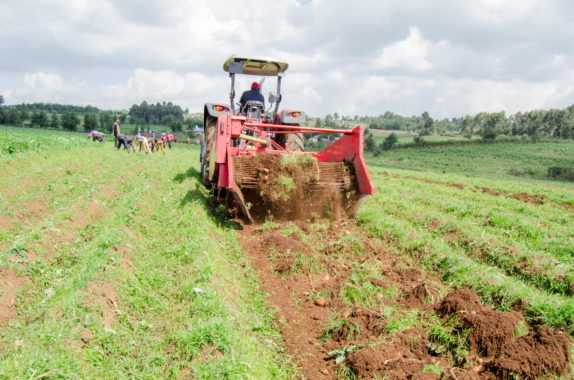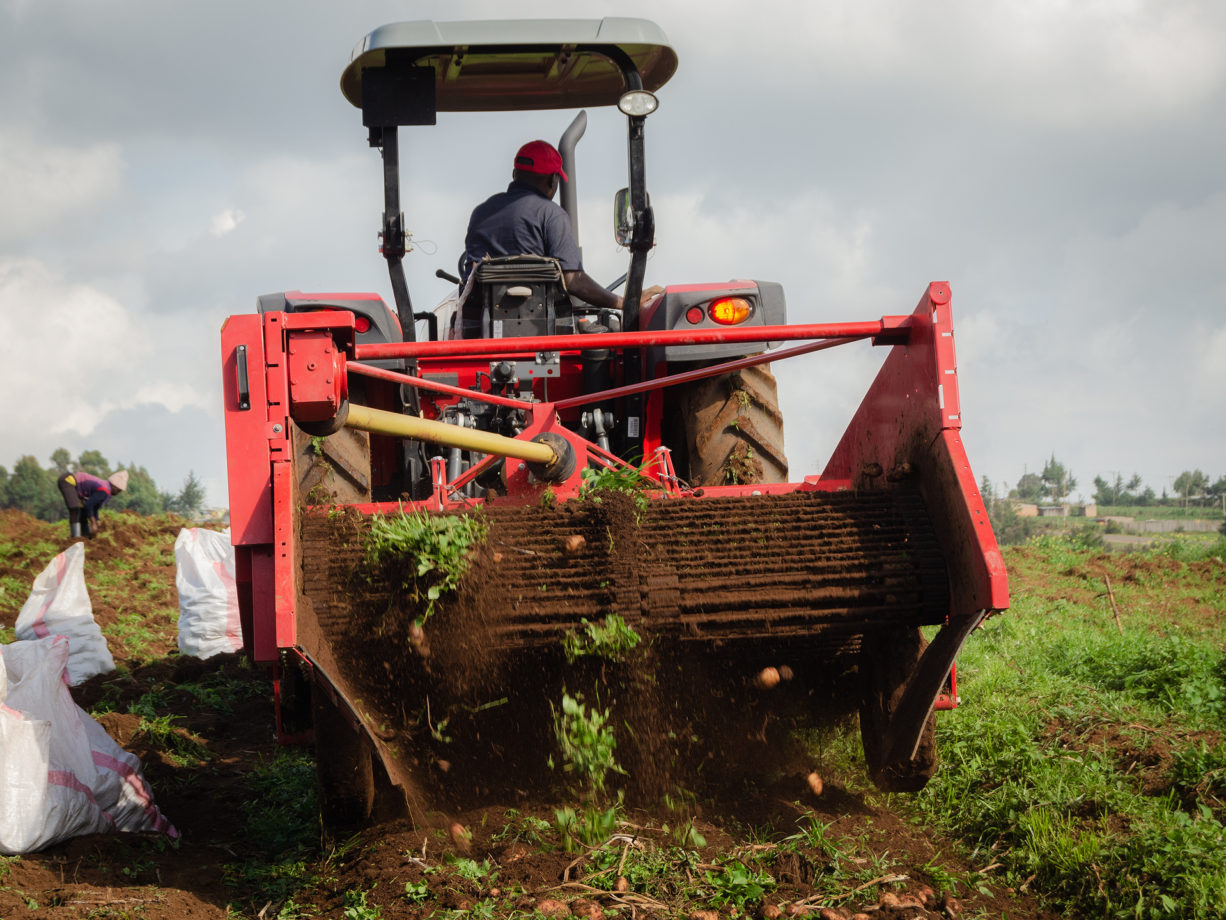
The concept
Together with KCSEED, the AHA concept for inter-farm mechanisation was implemented for the first time. It consists of a total of five modules that build on each other. In the individual workshops, firstly basic scenarios for mechanisation were discussed, focusing on their advantages and disadvantages. Next, complete self-mechanisation, i.e. machines obtained using own investment or leasing models, was analysed and, as an alternative, exclusive cooperation with local service providers discussed. Self-mechanisation presupposes profitability of the investment and requires acceptance of and demand for the service by members of the cooperative.
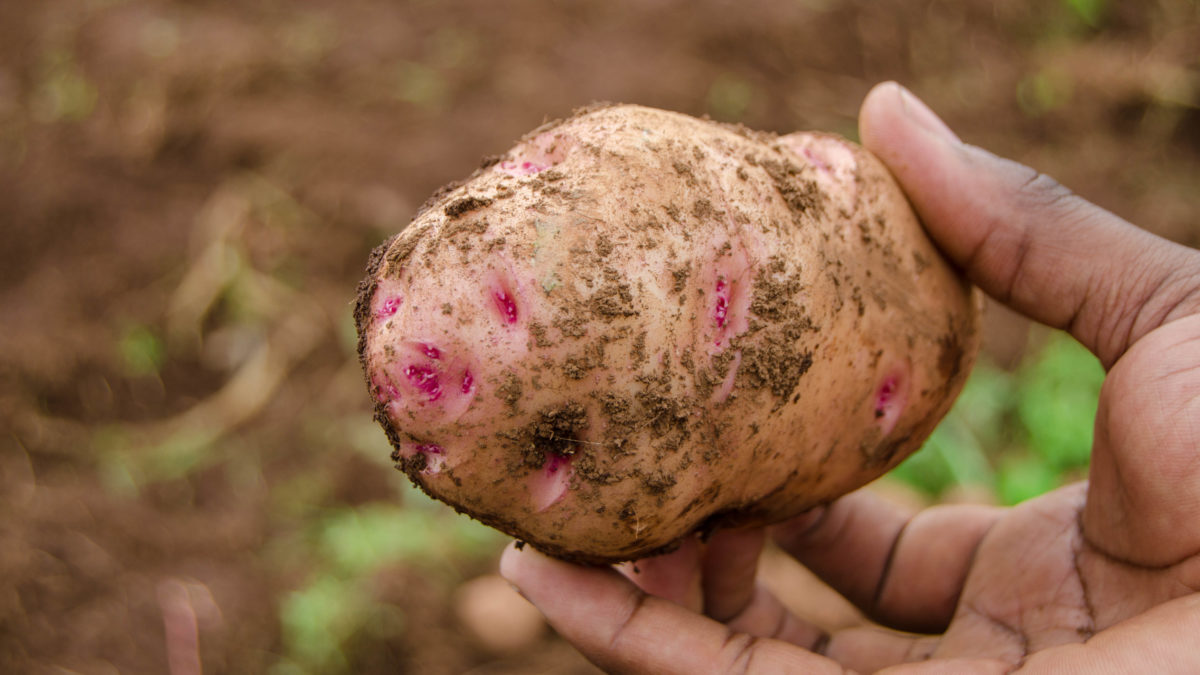
Implementation
During the series of workshops, it was decided to plan and prepare a field day. Part of the field day addressed selecting and laying out two test fields for potato production – one field using purely traditional farming methods and the other using fully mechanised cultivation methods. The yield data from both fields was to be collected using systematic harvesting in order to enable a comparison which could demonstrate the advantages of the mechanised cultivation method.
Why mechanise?
The advantages of the mechanised method are many and varied: whereas in the traditional cultivation method, the seed potatoes are placed in the furrow on the hard soil and then covered with soil, in the mechanised method the seed potatoes are placed inside the raised, pre-formed earth ridge itself. The ridge is formed and the seed potato inserted in one continuous step. The advantages of this are: the root space is accessible for sowing because the soil is loose, thereby promoting plant growth. In addition, the ridge and seeds warm up more quickly, leading to better development of the plant. During harvesting, the mechanically planted potatoes are harvested gently and are not damaged, as modern harvesting technology is also used here. In traditional harvesting, however, the potatoes are harvested by hand hoeing. Harvesting by hand hoeing can damage the tubers and make them unfit for storage.
Mechanised processes are also much faster and better suited to react to constantly changing weather conditions due to a faster process. They also reduce the amount of heavy physical labour in the field itself.
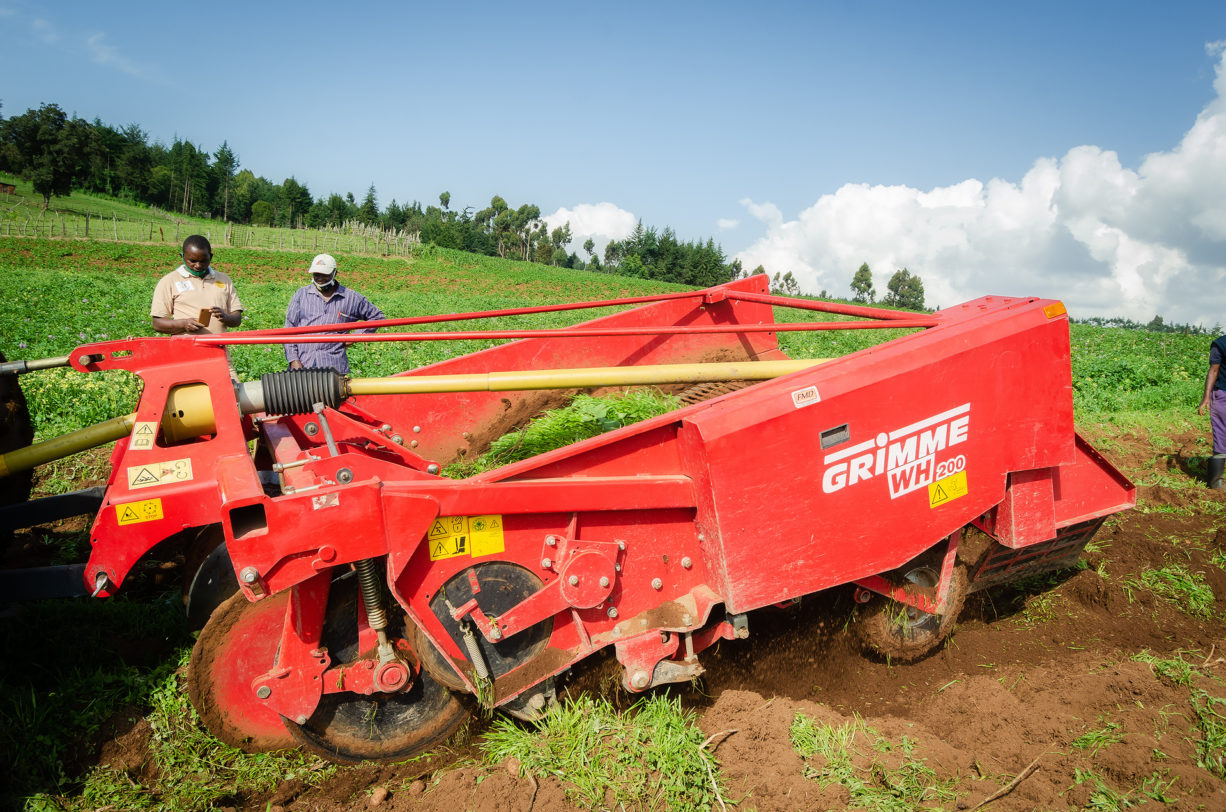
For fully mechanised cultivation, ridge formers were used together with “Grimme” potato planting techniques – a locally available, feasible method. However, since the technology and the procedure are fundamentally new for the partner – and necessary to secure the results – field work and equipment handling were accompanied by experts. AHA accompanied the process both on site and in digital form.
The cooperation encountered specific challenges, with heavy rainfall, locust infestations in the Horn of Africa and COVID-19 repeatedly causing minor delays, which had a major impact on both growing conditions and organisation. Due to the Coronavirus, harvesting before an audience on the field day had to be abandoned, but with the support of a local camera team it was possible to make a visual record of the harvests, so that they were available for the evaluation and marketing of the concept of inter-farm mechanisation. The material serves to illustrate and market mechanised cultivation methods among cooperative members.
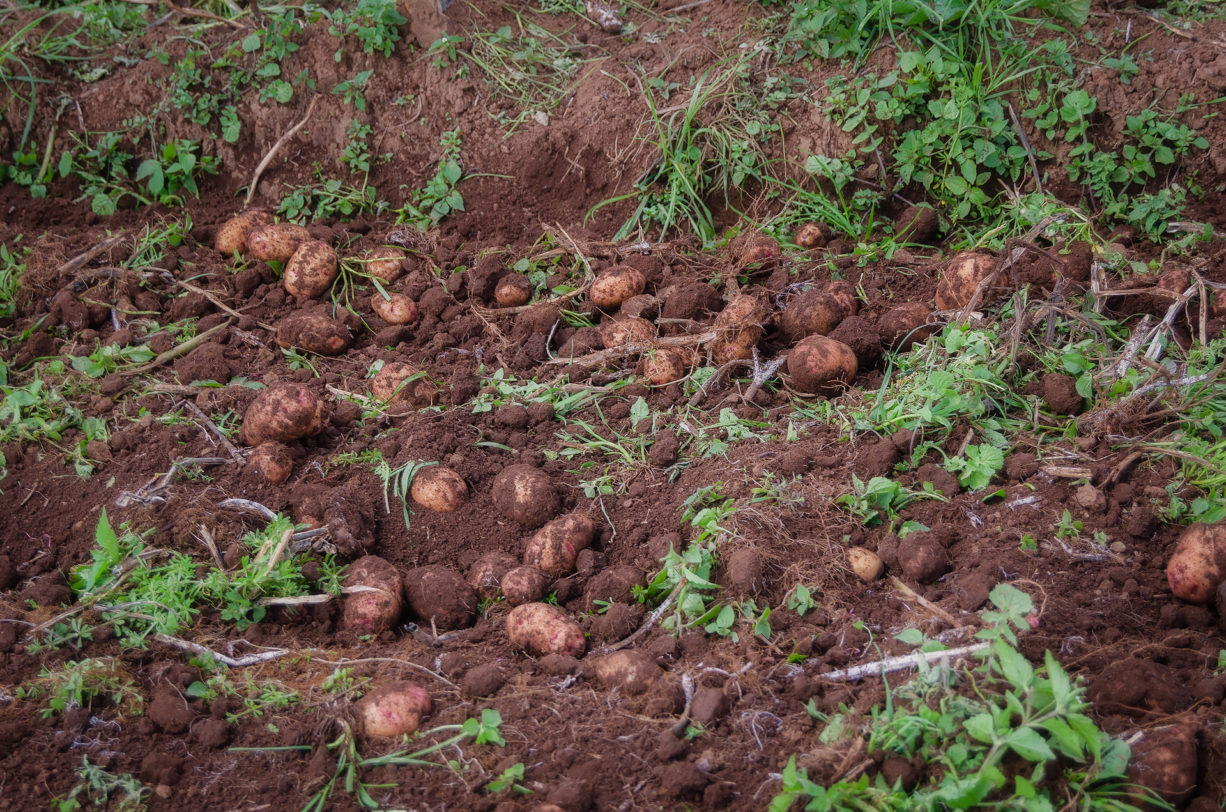
Conclusion
Overall, harvesting both fields was successful. KCSEED was able to increase its yield per hectare by 13 % thanks to the mechanised process, reduce its post-harvest losses by 43 % and thus generate more income through selling undamaged potatoes. The biggest surprise, however, was that the mechanised method even offered a cost advantage over the traditional cultivation method, meaning that no additional costs were incurred as a result of mechanisation. Based on imputed and brand-independent values, both methods could be precisely evaluated and compared.
This could be of interest to you:
-
International Cooperation -
International Cooperation Austausch mit Uganda – wechselseitig voneinander lernen
Read -
International Cooperation Generationenwandel Uganda – Herausforderung und Chance zugleich
Read

